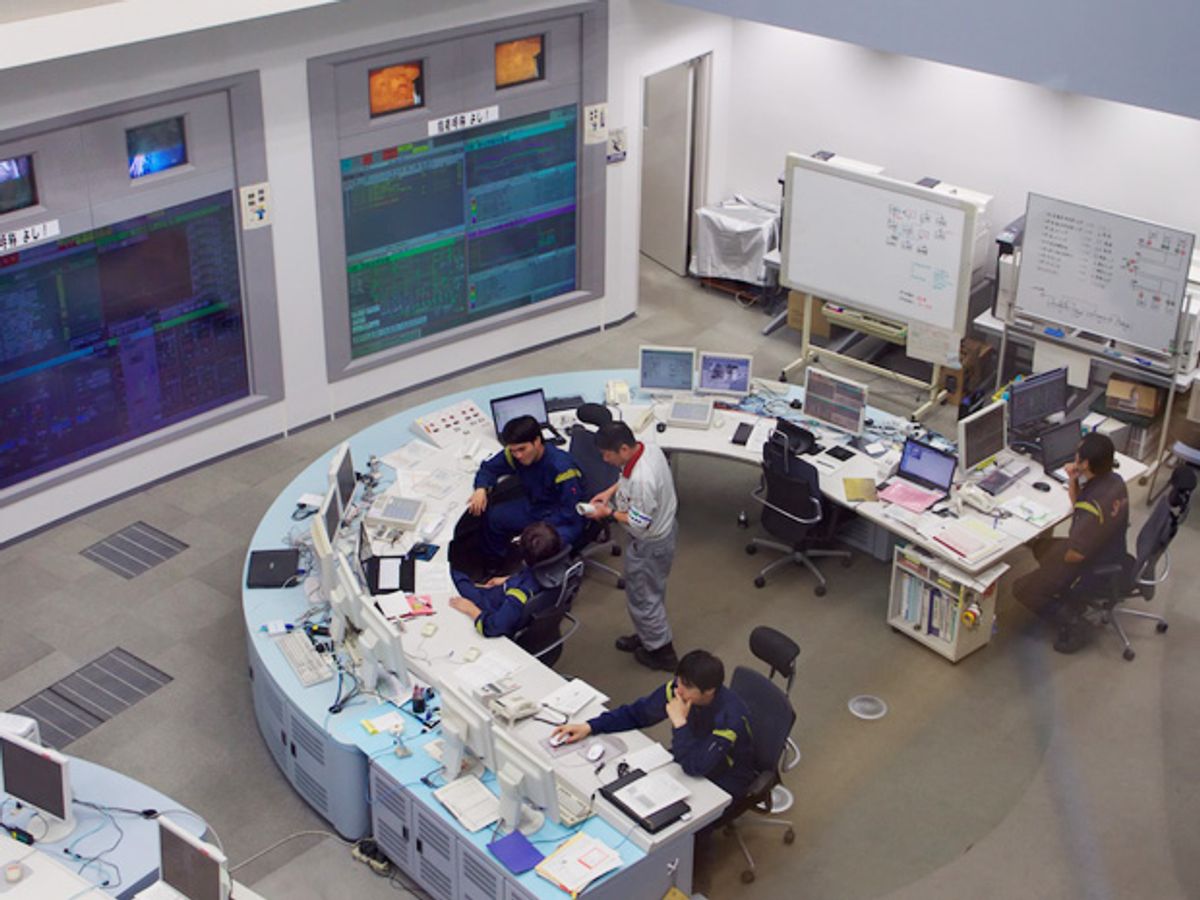
After the announcement Friday of strict limits on carbon emissions for new coal-fired plants in the United States, some in the energy industry are asking if there is a practical way to follow the new rules. Experts expect that new coal plants will require carbon capture and storage systems to keep to the limit of 500 kilograms per megawatt-hour. But the technology is expensive and not yet proven at full commercial scale. How close can coal power get without carbon capture? Japan might have the answer.
In August,IEEE Spectrum visited Japan’s showcase Isogo Thermal Power Station, an urban coal-fired plant incongruously located a mere 6 kilometers from central Yokohama. The plant is owned and operated by the J-Power Group, which supplies wholesale electricity to Japan’s 10 electric utility companies. In addition to thermal power stations, the group operates hydroelectric and geothermal plants, producing some 17 000 megawatts. It has other generating facilities, mostly gas-fired plants and wind farms, accounting for about 1000 megawatts, and it is building a nuclear power plant.
The company’s Isogo plant has been upgraded over the past decade. One new 600-MW unit went into operation in 2002 and another went on line in 2009, replacing the two 265-MW units of 1960s vintage and more than doubling plant output.
Inside space-saving tower-type boilers, the compact plant burns pulverized coal to heat water flowing through thousands of narrow pipes, which channel the steam to turbines. In the more advanced Unit 2, this generates a main steam pressure of 25 megapascals at a temperature of 600 °C, after which the steam is then recycled and reheated to 620 °C. (The steam in Unit 1 runs at 600 °C and is recycled and reheated to 610 °C.) This high-temperature, high-pressure process is called ultrasupercritical (USC) steam generation, explains plant director Hiroshi Sasatsu. The critical point is the temperature and pressure at which water and steam become indistinguishable, and USC steam is well past this point. The higher temperature and pressure make the plant’s operation more efficient at converting heat to electricity.
“As a result, we can achieve a gross thermal efficiency as high as 45 percent,” says Sasatsu. This, he adds, compares well with the 40 percent efficiency achieved by the old units, and it results in a reduction in carbon dioxide of 17 percent. That brings it down to 802 kg/MWh on a net or transmission-line basis—still well above what the U.S. Environmental Protection Agency demands of new coal plants.
But carbon dioxide isn’t the only environmental worry. To reduce air pollution, J-Power uses a two-stage combustion system and its own multipollutant control technology, which employs activated coke to absorb nitrogen oxides, sulfur oxides, and mercury pollutants from flue gases. Meanwhile, electrostatic precipitators remove soot and dust particles. “Consequently, SOx and NOx emissions are much lower than those of other countries’ coal-fired plants,” says Sasatsu, “almost at the same level of gas-fired plants.”
Masao Takeyama of the Tokyo Institute of Technology’s Graduate School of Science and Engineering, who is researching and developing new materials for use in power plants and other applications, says USC technology has been in use around the world since the mid-1960s. “But most USC coal-fired plants can only operate at temperatures below 600 °C, and so efficiency is usually less than 40 percent,” he says. “The reason the USC Isogo plant can operate at 620 °C—the highest in the world and therefore the highest efficiency—is because of the materials used in the boilers’ construction. It’s the most sophisticated material based on alpha iron that has been developed anywhere so far.”
But when it comes to efficiency claims, Richard Axelbaum, head of the Laboratory for Advanced Combustion and Energy Research at Washington University in St. Louis, and director of the Consortium for Clean Coal Utilization, says that comparisons aren’t always apples to apples and that no two power plants operate under identical conditions. “For instance, different coals and different climates and elevations will affect plant efficiencies,” he says.
In addition, while the rest of the world calculates plant efficiency based on the lower heating value of the fuel used, the United States has historically based its energy efficiency on the higher heating value of fuel combusted. (Both are a measure of how much heat you would get if you brought the products of combustion—carbon dioxide, water vapor, and so on—back to the starting temperature of the reaction. The lower value leaves out the energy you get from condensing the vapor to a liquid.) “So U.S. plant [efficiency] always looks horrible when compared to other countries,” says Axelbaum. “Now the old plants are horrible, but they look even worse because of the way we calculate the numbers.”
Meanwhile, other countries are whittling away at Japan’s lead. “Germany has achieved some high efficiencies, while China is building similar plants to the Japanese, and their numbers are close,” says Axelbaum. “So we’re not talking about large differences in temperatures.” And in the United States, he points out, the Prairie State Energy Campus plant, in Illinois, has achieved very low emissions.
Nevertheless, Axelbaum says, “the J-Power plant is excellent in all respects. It is definitely a state-of-the-art plant in efficiency and emissions. And there should be more of them.”
With new regulations looming, particularly around carbon emission reductions, and with natural gas prices expected to remain low, the U.S. industry shows little appetite for investing in new plants. If coal power is to continue in the United States, the industry could do worse than duplicating Isogo.
This article was modified on 27 September 2013.
About the Author
John Boyd writes about science and technology from Japan. He was a key part of IEEE Spectrum’s 2011 coverage of the Great East Japan Earthquake and the nuclear emergency that followed.



